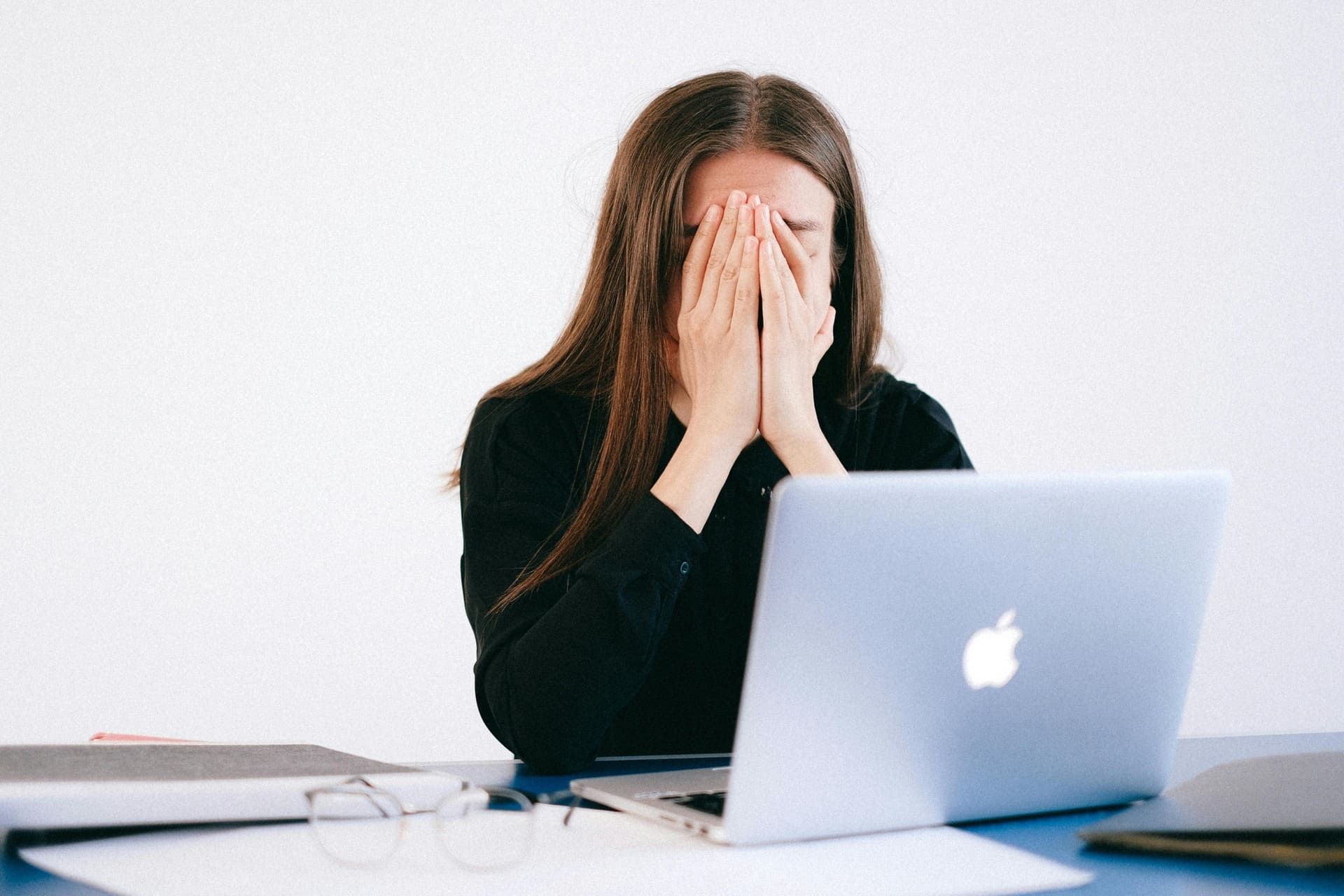How to Get Rid of a Stress Rash on Face and Neck – Fast Relief & Skincare Tips

Sarah Johnson, MD

What Does a Stress Rash Look Like?
In some cases, when your body is about to break, it may send visual signs through your skin. A stress rash usually shows up on the face, neck, chest, or arms, which are the places where stress reactions are most obvious. What Does a Stress Rash Look Like? It usually looks like red spots, groups of small bumps, or raised hives. In contrast to allergic reactions, these rashes often happen during or after times of extreme worry, emotional overload, or long-term stress. You might feel like your skin is representing the turmoil inside you by slightly swelling, itching, or getting hot. When stress manifests as a visible rash on your skin, an AI Mental Health can help you address the emotional triggers and develop calming strategies to soothe both mind and body.
The actual pain, whether it's a prickling itch or a red, blotchy face, can feel like betrayal, especially if you're already tired. What this means, though, is that your body is telling you that stress shows up on your face as well as in your mind. The rash isn't usually dangerous, but it's a clear sign that your nervous system is overactive, which can cause swelling and heightened sensitivity. Because scratching or washing too much can make it worse, gentle care like cold compresses and creams without scents can help calm both the skin and the nerves.
Remind yourself that stress rashes are actual, tangible evidence of emotional tension if you've ever been told it's “All in your head." They are a signal to slow down, not a sign of weakness. Not only should you take care of your skin when you see one, but you should also consider what your body needs to feel secure again. Permission to take a break, relax, and reduce stress can sometimes be more therapeutic than cream or antihistamine, and is a key part of how to get rid of a stress rash.
When stress shows up on your skin, it’s often your body’s way of signaling that your sense of emotional safety has been disrupted. Rebuilding that inner calm helps the nervous system settle and allows your skin to recover faster — from the inside out.
better with Soula

Support for every woman:
✅ A Personalized Plan to reduce anxiety and overthinking
✅ 24/7 Emotional Support whenever you need it Cycle-Aligned Mental Health Tracking — monitor your mood and symptoms in sync with your period
✅ Real-Time Insights into your energy levels and emotional state
✅ Bite-Sized Exercises to help you return to a calm, balanced state — anytime, anywhere
Why Stress Causes Skin Reactions
Instead than just reflecting stress, your skin reacts to it. When you're feeling stressed, your body releases stress hormones like cortisol, which damages your skin's protective layer and leads to inflammation. This biological chain reaction can result in eczema flare-ups, hives, or redness, especially in sensitive areas like your face, neck, or chest. Your skin essentially becomes a bright dashboard warning light that signals a problem with your nervous system. This is the core mechanism behind a stress rash on face, stress rash on neck, and chest areas.
The problem is that the more you scratch or worry about the rash, the worse it grows. Irritation feeds inflammation, which creates a vicious cycle of suffering. Therefore, for gentle care, cool compresses, fragrance-free moisturizers, and stress-reduction methods are crucial. Later, we'll discuss some soothing alternatives to help you break the cycle and give your skin (and mind) the rest it deserves. This cycle of irritation and inflammation is just one of many other facial stress symptoms, where emotional strain becomes visibly written on the skin.
Remember that your skin is not betraying you; rather, it is asking for help. If you understand the connection between stress and rash on face and other areas, you can be gentle to both your body and your emotions.
Chronic stress doesn’t just affect your skin — it drains your energy too. Many people who develop visible flare-ups also experience stress-related fatigue, where the body’s constant “fight-or-flight” response leaves you feeling both physically and emotionally exhausted.
Common Symptoms of a Stress Rash on Face and Neck
A stress rash on face or neck usually shows up with clear, uncomfortable signs. Persistent redness, an intense itching sensation, dry patches that may flake, and raised bumps or welts are the most common signs. These symptoms often show up out of nowhere during or after a time of high stress. One important thing about the rash is that it often looks the same on both cheeks, both sides of the jawline, or across the upper chest. This symmetry can help tell it apart from contact allergies, which may only affect the area where you came into contact with it.
How to Get Rid of a Stress Rash Quickly
If you have a stress rash on neck or face, you need to act quickly and gently to get rid of a stress rash. Your first goal is to calm the itch-scratch cycle and ease the inflammation.
Right away:
- Put a cool compress on it. This is your first line of defense. Putting a cloth soaked in cold water on the area for 5 to 10 minutes makes blood vessels smaller, which quickly reduces redness and itching.
- Use a calming moisturizer: After you pat your skin dry, put on a fragrance-free moisturizer that has ceramides, colloidal oatmeal, or aloe vera in it. This fixes the skin barrier and stops the itch from getting worse because of dryness.
- Think about taking an over-the-counter antihistamine: Cetirizine or loratadine, which are both over-the-counter antihistamines, can help control the body's histamine response, which can help reduce itching and swelling from the inside out.
|
DO |
DON'T |
|---|---|
|
Use cool compresses and products that don't smell good. |
Use hot water, rough scrubs, or scented skin care. |
|
Put on cotton clothes that are soft and breathable. |
Rub or scratch the area that hurts. |
|
If you need one, take an over-the-counter antihistamine. |
Put on a lot of makeup or try out new products that you haven't used before. |
|
Protect and keep the skin moist. |
Eat too much spicy food or drink too much alcohol, which can cause inflammation. |
Natural Remedies for Stress-Related Rashes
If you want to treat a stress rash face in a natural way, there are a number of effective options that can be added to your routine.
Topical Soothers:
- Oatmeal Masks: Colloidal oatmeal has been shown to help with inflammation. You can use a paste made of ground oats and cool water as a mask to ease itching and redness.
- Aloe Vera: Pure aloe vera gel cools and hydrates the skin, which helps calm inflamed skin and speed up healing.
- Calendula Cream: This herbal cream is well-known for its ability to calm irritated skin and reduce inflammation.
Stress-Reducing Practices: The best way to deal with the root cause of stress and rash on face is to lower cortisol. Add some simple breathing exercises, like the 4-7-8 technique (inhale for 4 seconds, hold for 7 seconds, and exhale for 8 seconds), or a 10-minute meditation. Also, drinking herbal teas like peppermint or tulsi can help calm the nervous system, which can help manage the internal connection between your mind and your skin.
How to Prevent Future Flare-Ups
Building resilience from the inside out is the key to avoiding a stress rash on face. Daily walks, yoga, or mindfulness are some of the most basic ways to deal with stress. To help your skin's barrier function, make sure you get 7 to 9 hours of good sleep and drink plenty of water. A diet high in omega-3s, antioxidants, and probiotics can also help calm systemic inflammation. To keep your skin from getting irritated, use only gentle, fragrance-free cleansers and moisturizers. New studies also show that the gut-skin axis is important. Taking probiotics to support gut health and improving vagal tone (by humming, being cold, or singing) can lower the body's stress response and lead to fewer and less severe skin flare-ups over time.
When to See a Doctor or Dermatologist
Most stress rashes go away on their own, but it's important to get professional help if:
- The rash is still there or getting worse after a few days of home treatment.
- You have a lot of swelling, pain, or signs of a skin infection, like oozing, crusting, or fever.
- The rash is accompanied by other symptoms that affect the whole body, such as swelling of the lips or tongue, dizziness, chest pain, or trouble breathing. These could be signs of a serious allergic reaction.
A doctor or dermatologist can tell you if you have eczema or psoriasis and, if necessary, give you stronger topical or oral medications.
FAQ – Stress Rash on Face and Neck
Can stress really cause a rash?
Yes, of course. When you're stressed, your body releases cortisol and other hormones that can break down your skin's barrier and cause inflammation. This can lead to hives, redness, and itching.
How long does a stress rash last?
Once the source of stress is dealt with, most acute stress rashes go away in a few hours to a few days. If it lasts more than a week, see a doctor.
Is it contagious?
No, a stress rash is an internal reaction of the body and can't be passed on to other people.
How do I know it’s stress and not an allergy?
Stress rashes usually show up in a symmetrical pattern and get worse when you're upset. Allergic reactions happen when you come into contact with a certain allergen, like food, pollen, or detergent.
Can anxiety make skin worse?
Yes, anxiety keeps the body on high alert, which keeps the cycle of inflammation and skin sensitivity going. This makes it harder for rashes to heal.
A stress rash on neck or face is a common and manageable sign from your body. Remember that healing requires two things: gentle skin care to calm the surface and dedicated self-care to calm the root cause. You can stop the cycle by knowing what a stress rash looks like and taking action. These small, regular actions - like choosing a moisturizer that doesn't have any scents, taking a mindful breath, or getting enough sleep - can have big effects on your skin and your health in the long run, which is the ultimate goal for anyone looking for how to get rid of a stress rash for good.














